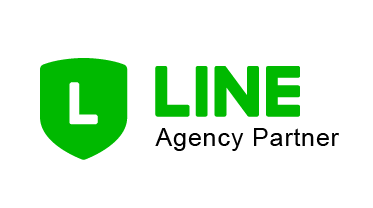What Is Internal Linking In SEO & Is It Important?
Table of Contents
What Are Internal Links?

What Is Internal Linking In SEO & Is It Important?
Source: Freepik
An internal link is a hyperlink which leads to another page on the same domain. It is different from an external link which is a hyperlink that links to another page on a different domain. Internal links can be found on several different pages on your site, such as the homepage, about us, and blog posts.
Now that you know what internal links are, you need to understand their significant role in search engine optimization (SEO).
Why Are Internal Links Important In SEO?

Why Are Internal Links Important In SEO?
Source:Freepik
1. Builds A Cohesive Site Architecture
The objective of SEO is to try and get your website to rank higher on search engines so you can enjoy numerous benefits. And, to rank higher, you need to be easier to find.
Search engine crawlers go through tens of thousands of websites every day in order to find and index content, and they do so by following links. Both users and search engine crawlers navigate your site through internal and external links, and they will only come across your page if you have internal links pointing to it.
By linking your site structure together using internal links, you are essentially guiding search engine crawlers and users through your most important website content. This can help you increase your ranking on search engines, increase website traffic and sales.
2. Link Juice
One of the factors that search engines look at when positioning your website is link juice or also known as link equity. Search engines base link juice on the theory that links share authority and value across pages. The value of link juice depends on the linking page’s authority, content relevance and more. By increasing your website’s backlinks and improving your link juice, your website can rank higher on search engines.
How To Use Internal Linking In SEO The Best Possible Way?

How To Use Internal Links In SEO The Best Possible Way?
Source: Freepik
1. Use Keywords To Create Descriptive Anchor Text
The anchor text is the clickable text used to link to another article. According to Google’s best practices, it is recommended to use one of your keywords as the anchor text. It helps search engines better understand the page that you’re linking to.
For example, if you’re trying to redirect your users to a page about the SEO services that you offer at your digital marketing agency, you’d want to use your anchor text like this:
If you’re looking for SEO services in Kuala Lumpur, contact Primal Digital Agency for more information.
Search engines also prefer if you use different exact match anchor texts in your internal links to avoid your page looking too spammy.
2. Hyperlink To Important Pages
The objective of placing internal links in your content is to send link juice and authority to the page. So, it only makes sense that you send that link juice to important pages that you want your users to see.
The ideal internal linking strategy is to find out your best-performing pages and use keywords that match that page and link back to it.
3. Place Your Internal Links Strategically
Internal linking doesn’t have hard and fast rules, but there are methods that certainly work better than others. A website’s ranking is determined by a number of factors, such as internal linking, bounce rate, page speed, and many more. By placing your internal links closer to the top of your page, you can help significantly reduce your website’s bounce rate.
When you place an internal link at the top of the page, you provide your users something to click on straight away, which means they will spend more time on your website. Search engines will see this as a signal that people like your website because they’re spending more time there.
4. Use Dofollow Links
One of the most basic but most important things about internal linking is using dofollow links. Dofollow links help pass link juice to other pages, while nofollow links do not. So, if you mark your link as nofollow, your efforts will go to waste.
5. Add Internal Links To Old Content
Now that you know how to use internal links and why their important, you can start fixing old pages. Proper internal linking is a practice you should always keep in mind when creating new content, but it should also be a sign for you to fix old pages.
There is always room for improvement, and you might not have optimised your old content as best as you can. So, do an audit of your pages and identify how you can improve and fix broken internal links.
6. Don’t Overoptimise Your Pages
Internal linking in SEO is great but don’t overdo it. After a certain point, links on one page don’t have that much value and will start to look spammy. The sweet spot for the number of internal links is between 3 and 5, and you should try to keep it between there.
Online businesses need SEO in Malaysia to stand out over their competition, and if you’re reading this article, you’re probably thinking about improving your website’s ranking. SEO can be overwhelming, especially if you’re not an expert in the field.
We at Primal Malaysia provide expert SEO Services in Kuala Lumpur to help businesses of all sizes grow and rank higher on search engines. Contact us today to get started on your SEO journey!
















Join the discussion - 0 Comment